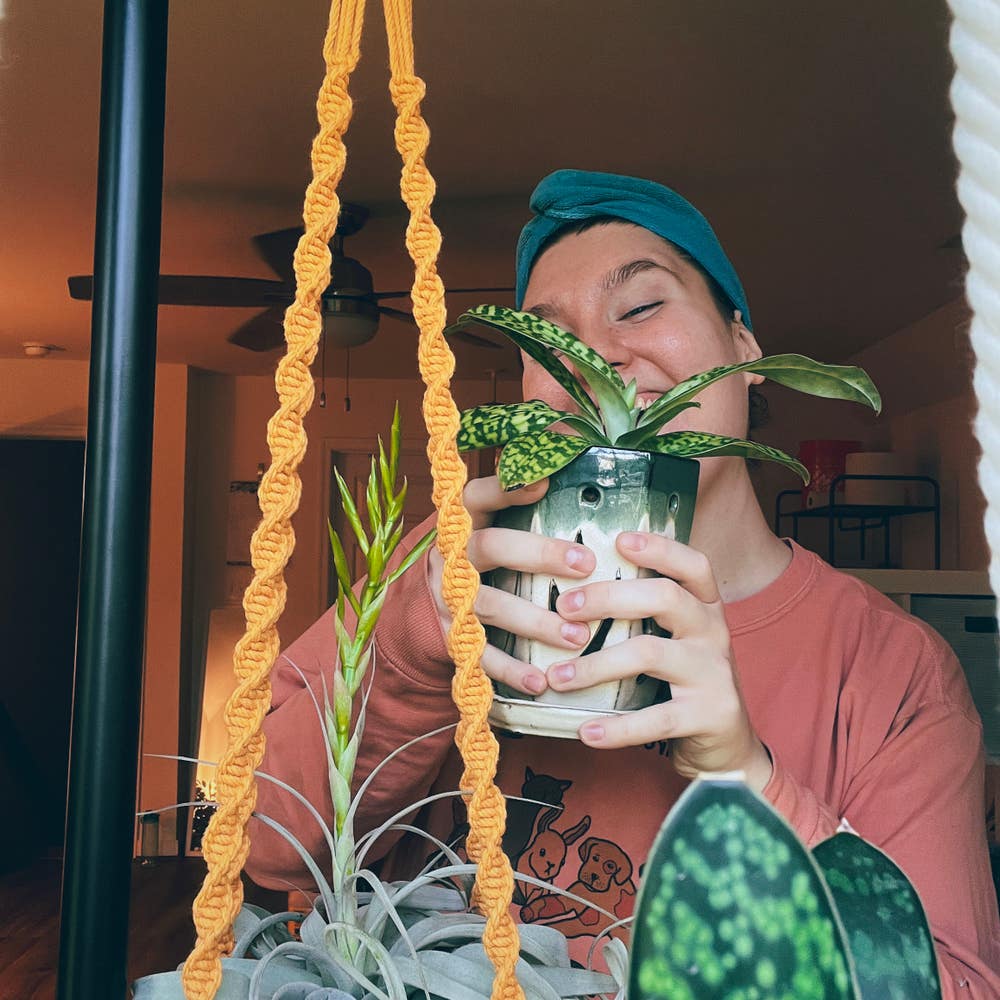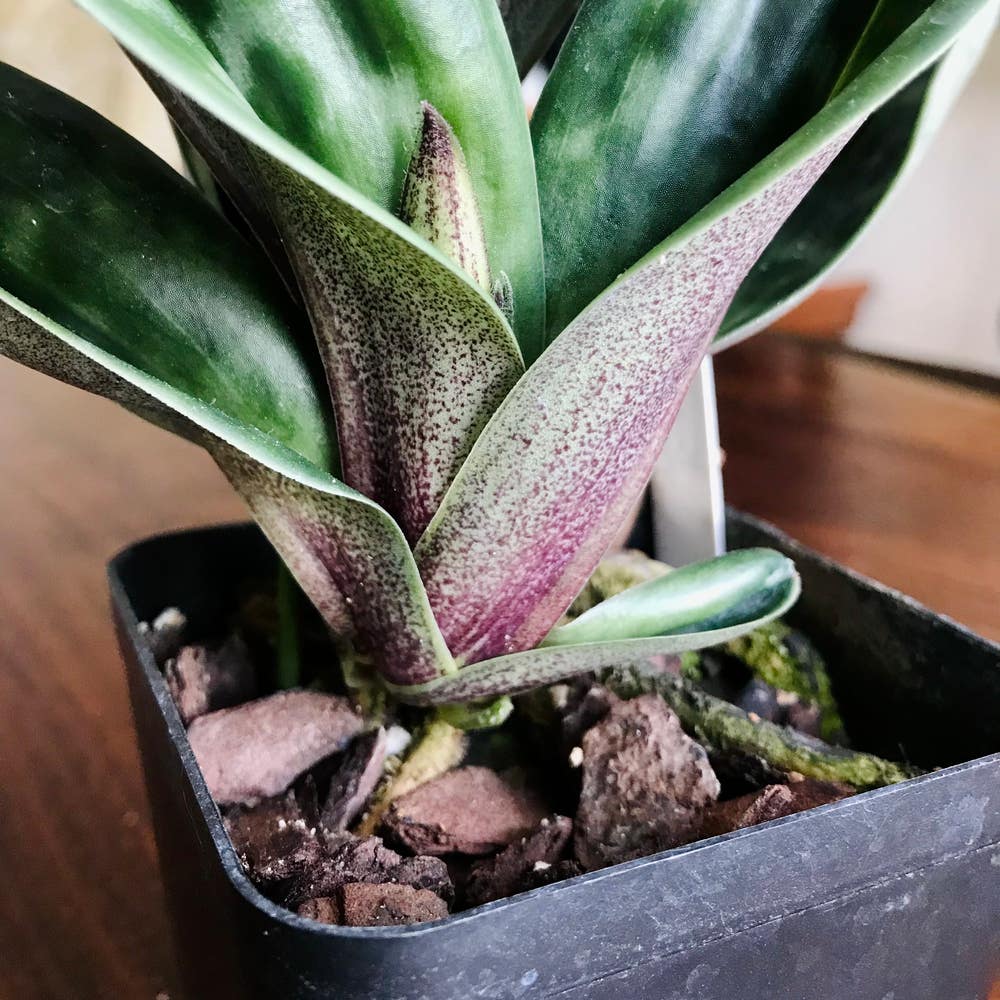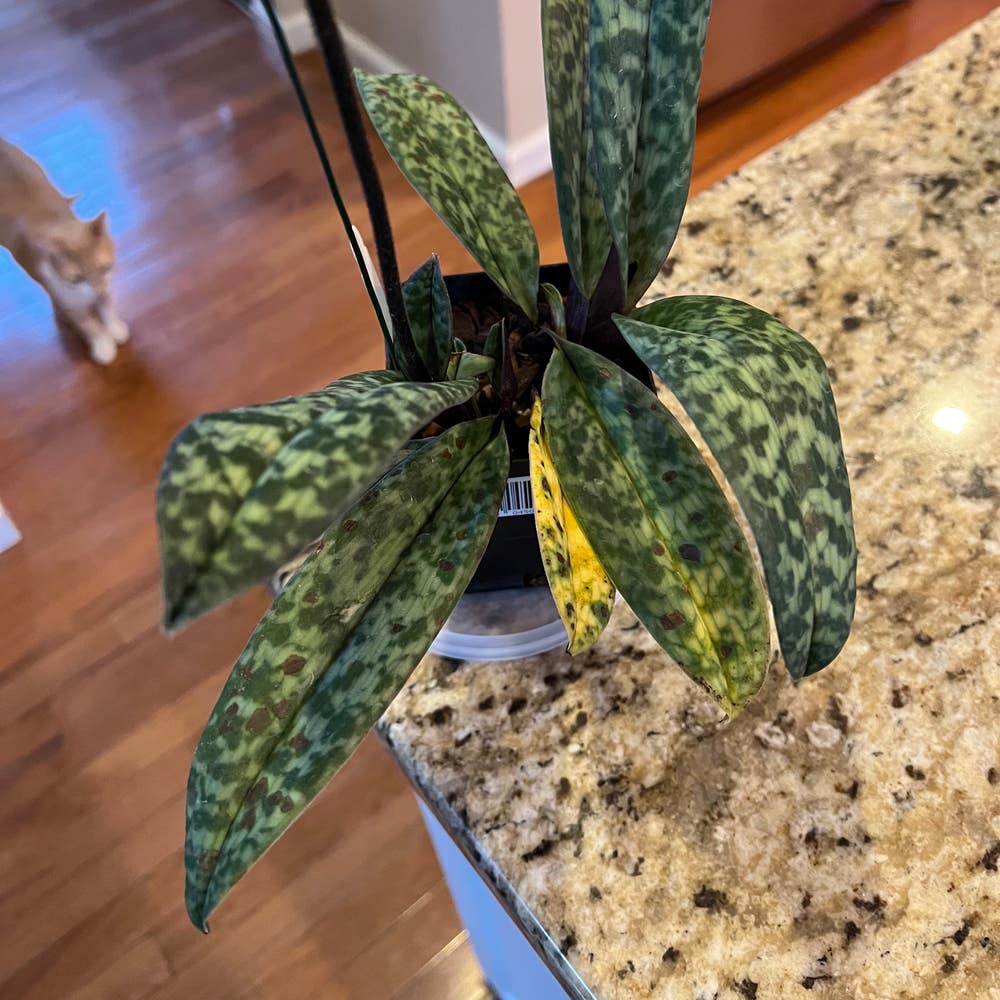How to Propagate Your Paphiopedilum 'Hawaiian Fancy'
Apr 06, 2024•4 min read
Multiply your 'Hawaiian Fancy' orchids 🌸 and revel in the bloom of success with our expert guide!
- Spring division for overcrowded orchids ensures optimal propagation success.
- 🌱 Back bulbs need bright light and daily misting for new growth.
- Patience with seed propagation: germination can take weeks to months.
Getting Started with Division
⏰ When to Divide Your Orchid
Spring ushers in the optimal time for division, aligning with your Paphiopedilum 'Hawaiian Fancy's growth spurt. Look for overcrowding—a telltale sign it's time to give your plant some breathing room.
🛠 Step-by-Step Division Guide
🛡️ Preparing for Division
Before diving in, assemble your tools: a sharp knife, gloves, and fresh potting mix. It's like gearing up for a minor surgery on your beloved green patient.
🌱 The Division Process
- Remove the orchid from its pot, being gentle to minimize root trauma.
- Inspect the root ball for natural divisions; these are your new plant starts.
- Separate the sections with clean hands or a knife, ensuring each has roots and shoots.
- Plant each division in its own pot with fresh mix, tucking them in like cherished treasures.
🌧 Aftercare for Divisions
Post-division, your plants will need consistent moisture—not a swamp, just a nice drink. Place them in bright, indirect light and watch for new growth, the victory flag of a successful division.
Back Bulb Propagation: A Second Chance at Life
💡 Choosing the Right Back Bulbs
In the quest for new growth, selecting the right back bulbs is crucial. Look for plump and firm ones, as they're the most promising. Discoloration or a bit of shrivel doesn't spell doom; these bulbs can surprise you with their resilience.
🌱 The Back Bulb Process
Separate the back bulbs from the mother plant with a clean, sharp cut. Pot them in a mix of large-particle perlite, which grips well and balances moisture with aeration. Alternatively, consider the semi-hydroponic approach for a lighter medium.
Potting should be in small clusters, as solidarity can be tough on these hopefuls. Position them in a space with bright, indirect light—think sunroom, not scorching patio. Watering should be a daily misting affair, complemented with a nutrient boost from products like KelpMax or a gentle fertilizer.
Patience is your ally here. It might take days or weeks, but keep an eye out for green shoots or bumps on the pseudobulb. These are the heralds of success, signaling that your back bulbs are on their way to becoming independent plants.
Seed Propagation: For the Patient Grower
🌱 Collecting and Sowing Seeds
Harvesting seeds from your Paphiopedilum 'Hawaiian Fancy' is a lesson in patience. Wait for the seed pods to mature, turning brown or tan, before you even think about making a move. Once you've got your seeds, it's time to get them cozy for their growth journey. Moisture is your new best friend here; keep the soil damp with a gentle mist to avoid sending the seeds into oblivion with a torrential watering can assault. Germination is a waiting game, often stretching over several weeks or even months, so don't hold your breath just yet.
🌱 Raising Seedlings
Once your seeds decide to grace you with their presence and sprout, it's time to shift gears. Gradually introduce them to less humid conditions, like weaning a baby off a pacifier. This helps them acclimate to the harsh reality of a normal growing environment. Consistency is key in the care of your seedlings; they need a stable, warm, and humid environment to thrive. Think of it as a tropical getaway in a pot. Keep an eye on them, but don't hover; they'll grow in their own sweet time. Remember, you're not just growing plants; you're cultivating a legacy.
Ensuring Propagation Success
🌱 Ideal Conditions for New Plants
Creating the perfect environment for your propagated Paphiopedilum 'Hawaiian Fancy' is like setting the stage for a star performer.
🌡️ Temperature and Humidity
Aim for a daytime temperature of 70-80°F, with a slight drop at night. Humidity should be in the sweet spot of 40-70%.
☀️ Light Requirements
Provide bright, indirect sunlight. Direct rays can damage the delicate leaves of your orchid.
💨 Air Circulation
Good air circulation is non-negotiable. It's an invisible ally against fungal threats.
🚫 Common Pitfalls and How to Avoid Them
Avoiding common mistakes is key to propagation success.
💧 Overwatering
Overwatering is the root of all evil. Ensure the soil is moist but never soggy.
🍄 Fungal Infections
Keep an eye out for mold and fungus. Prune dead leaves and space out plants to promote air flow.
🧼 Sterilization
Sterilize your tools and work area. It's a simple step that prevents a world of trouble.
🔄 Consistency
Establish a consistent care routine. It's the backbone of healthy growth for your new orchids.
🕵️ Monitoring
Stay vigilant. Early signs of distress are easier to manage than a full-blown crisis.
Remember, propagation is a marathon, not a sprint. Give your plants the time they need to grow, and you'll be rewarded with a thriving orchid collection.




